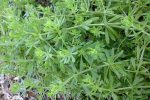Common “Weeds” as Food and Medicine- Part 1, by M.C.
by Sarah Latimer, Survival Blog:

This is information about wild food. The editors of SurvivalBlog and the author make no claims as to the correctness, safety, or usability of the data. The information contained herein is intended to be an educational tool for gathering and using wild plants. All data is to be used at your own risk.]
If things go very wrong, such as in an EOTWAWKI or SHTF scenario, you may find yourself without access to doctors and hospitals and may have to take care of yourself and your family. Being the family physician or Dr. Mom/Dad, you might have to provide herbal help and comfort, and “medicine” grows just about everywhere, for free.
Print For Stressful Situation and Have a Good Field Guide
If you find this article to be potentially useful, print it and save it in a binder for later reference. I find that the biggest lie I tell myself is “I’ll remember”. I often don’t, so I’ve made a point of printing stuff I think I might need and forget in a stressful situation.
Warning: Never eat a wild plant unless you are 100 percent positive of its identification. Get yourself a good field guide, like Edible Wild Plants – A North American Field Guide.
Useful Weeds Grow All Over the U.S.
Most of these useful “weeds” grow all over the U.S. I have personally seen them growing locally in northern California, northeast Oregon, and recently on a week long trip to northern Idaho. I found many of them in the Coeur d’Alene/Sand Point area. They grow just about everywhere! So, that being said, they likely grow in your area as well and a little scouting around before you need them is an excellent idea.
Many Are Excellent Pot Herbs
Further, many of these are excellent pot herbs as well. Some in a pan of water with maybe some rice and bouillon would make a delicious soup to extend your preps and provide fresh food to your family.
Chickweed
 Chickweed (Stelleria media) is abundant and easy to find in the early spring. Gather fresh edible plants as soon as flowers appear. It can be used fresh or dried for later herb use.
Chickweed (Stelleria media) is abundant and easy to find in the early spring. Gather fresh edible plants as soon as flowers appear. It can be used fresh or dried for later herb use.
Properties
Chickweed is medicinal and edible. Cuttings are very nutritious, high in vitamins and minerals. It can be added to salads or cooked as a pot herb, tasting somewhat like spinach.
Medicinal Uses
The whole plant is used in alternative medicine as an astringent; to relieve flatulence, as it soothes and protects mucous membranes; and as a diuretic, expectorant, laxative, means to brings down fever, and aid in healing wounds.
A decoction (strong tea) of the whole plant is taken internally post-partum as it promotes menstrual discharge, promotes secretion of milk, and is a circulatory tonic. It is also used to relieve constipation. An infusion (tea) of the dried herb is used in coughs and hoarseness and is beneficial in the treatment of kidney complaints.
New research indicates its use as an effective antihistamine. The decoction is also used externally to treat rheumatic pains, wounds and ulcers. It can be applied as a medicinal poultice by bruising the leaves and applying to a wound. It will relieve any kind of roseola and is effective wherever there are fragile superficial veins or itching skin conditions.
Recipe and Doses
A chickweed infusion recipe is as follows:
To 1 Tbsp. dried herb (2 Tbsp, if fresh), add 1 cup boiling water, and steep for 10 min. Take in ½ cup doses between two and four times daily, during a cold or flu.
Poisonous Look Alikes
There are no poisonous look alikes for chickweed.
Cleavers
 Cleavers (Galium aparine) is also called bedstraw, goosegrass, clivers, stickyweed. It is very easy to cultivate and prefers a loose, moist, leafy soil in partial shade. This plant does not really need any help to reproduce itself and can be invasive. The stems and leaves are covered with little hooked bristles, which attach to passing objects. In this way, it fastens itself to adjacent shrubs to climb its way upwards through dense undergrowth into daylight, often forming matted masses. Leaves are narrow, lance-shaped and are rough along the margins and surface with the prickles pointing backwards. The flowers are white, tiny, 1/16 to 1/8 inch in diameter and star-like. Flowers bloom April through September.
Cleavers (Galium aparine) is also called bedstraw, goosegrass, clivers, stickyweed. It is very easy to cultivate and prefers a loose, moist, leafy soil in partial shade. This plant does not really need any help to reproduce itself and can be invasive. The stems and leaves are covered with little hooked bristles, which attach to passing objects. In this way, it fastens itself to adjacent shrubs to climb its way upwards through dense undergrowth into daylight, often forming matted masses. Leaves are narrow, lance-shaped and are rough along the margins and surface with the prickles pointing backwards. The flowers are white, tiny, 1/16 to 1/8 inch in diameter and star-like. Flowers bloom April through September.
Gather the above ground plant, being careful not to gather whatever it touches. Dry for later herb use. It should be picked through before drying to ensure herb is contaminant free.
Properties
This plant is edible and medicinal; it has been used for centuries as an alternative medicine by indigenous peoples on many continents. It is edible raw though said to be unpalatable, mainly used as a pot-herb or as an addition to soups. Using the plant as a vegetable has a slimming effect on the body. Cleavers seed is one of the best coffee substitutes. It merely needs to be dried and lightly roasted and has much the same flavor as coffee.
Medicinal Uses
Cleavers has a long history of use as an alternative medicine and is still used widely by modern herbalists. It is used both internally and externally in the treatment of a wide range of ailments. The dried or fresh herb is alterative, anti-inflammatory, laxative, and astringent; it increases perspiration, is diuretic, reduces fever, is a tonic and proves useful for healing wounds. It’s very effective in stimulating the lymphatic system and as a general detoxifying agent.
It is often taken to treat skin problems, such as seborrhea, eczema and psoriasis.
The fresh plant or juice is used as a medicinal poultice for wounds, ulcers, and many other skin problems. An infusion of the herb has shown of benefit in the treatment of glandular fever, tonsillitis, hepatitis, and cystitis. The infusion is also used to treat liver, bladder, and urinary problems. Additionally, it stimulates the uterus and affected blood vessels.
Recipe and Doses
A cleavers infusion recipe is as follows: To 1 pint of boiling water, add 3 heaping Tbsp. of dried or fresh herb. Steep 10 minutes. Take in mouthful doses throughout the day.
Poisonous Look Alikes
There are no poisonous look alikes.
Dandelion
Dandelion (Taraxacum) requires no picture; we all know what it looks like!
Properties
Yep, it is that weed you’re always trying to get rid of in your lawn. Dandelion is one of the most nutritious plants you can find, having more vitamins and minerals than most vegetables. It is a great spring tonic as either an infusion or added to soups. Dandelion is sweet tasting in the early spring, though after the flowers grow it become somewhat bitter. However, bitter herbs help with digestion, so maybe that is not a bad thing.
Dandelion is found growing in pastures, lawns, waste ground, sand, rocks, and even cracks in concrete. From a thick, long, tap root that is dark brown outside and white and milky white inside grow long jaggedly toothed leaves that are shiny, dark to light green and growing in the shape of a rosette close to the ground.
Medicinal Uses
The medicinal uses of dandelion include: for the treatment of the gall bladder, kidney, and urinary disorders; gallstones; jaundice; cirrhosis; hypoglycemia; indigestion with constipation; edema associated with high blood pressure and heart weakness; chronic joint and skin complaints; gout; eczema; and acne. As a tonic, dandelion strengthens the kidneys. An infusion of the root encourages the steady elimination of toxins from the body. Dandelion is a powerful diuretic but does not deplete the body of potassium. The fresh juice of dandelion is applied externally to fight bacteria and help heal wounds. The plant has an antibacterial action, inhibiting the growth of Staphococcus aureus, pneumococci, meningococci, Bacillus dysenteriae, B. typhi, C. diphtheriae, proteus.
Gather edible leaves and flowers anytime, roots in spring. Dry for later medicinal herb use.
Loading...



